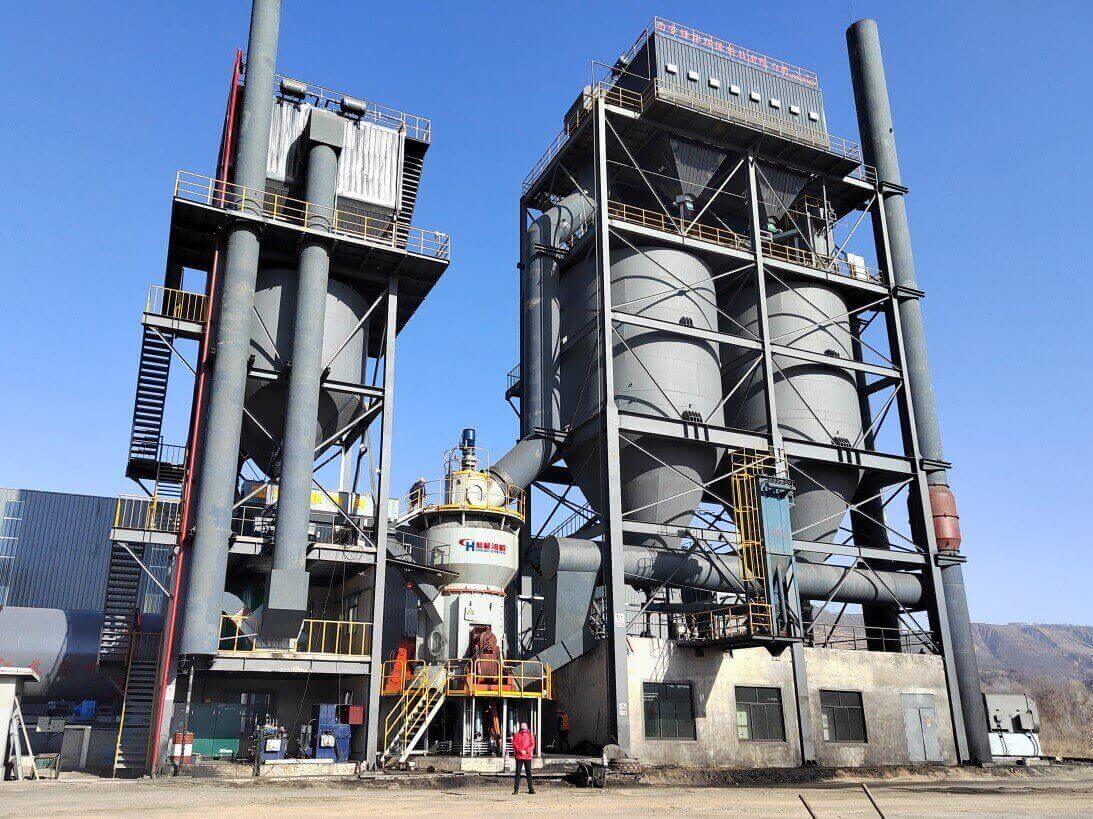Chromium slag is a large amount of highly toxic solid waste discharged from chromium salt production plants and ferrochromium alloy production processes. In these solid wastes, in addition to calcium, magnesium, iron, silicon, aluminum and other elements, they also contain certain incompletely reacted Cr2O3, No. 1 to 3 water-soluble sodium chromate and acid-soluble calcium chromate. So how to deal with chromium slag? As a manufacturer of chromium slag vertical grinding mills, Guilin Hongcheng will give you a detailed introduction today.
① Chromium residue treatment should start with reforming the process route, adopting cleaner production processes as much as possible, using non-toxic, harmless or low-toxic and low-harm raw materials and energy, or converting remaining substances into non-toxic or usable by-products: using New technologies and new equipment that produce no or less chromium slag can maximize the utilization of resources and energy and eliminate chromium slag in the production process.
② During the production process of chromium chemical products, the chromium slag that must be discharged should be disposed of on site according to its nature. Eliminate its negative impact on the environment through the recycling or comprehensive utilization of chromium slag. For qualified enterprises, chromium slag should be processed centrally in accordance with national regulations and technical specifications on hazardous waste management to prevent secondary pollution.
③ Chromium slag that cannot or cannot be comprehensively utilized for the time being must be properly stored and wait for detoxification, stabilization, solidification or utilization when conditions are mature in the future.
The problem of solid hazardous waste pollution in chromium salt production mainly involves two aspects: one is the old slag accumulated for many years, and the other is the new slag that is constantly produced. The overall plan to control pollution is to reduce old slag without accumulating new slag. The governance is divided into three levels: the first is harmless control, the second is comprehensive utilization of resources, and the third is the use of green processes with zero pollution emissions. Although chromium slag is highly toxic to the environment, animals, plants and humans. However, because it contains calcium, magnesium, iron, silicon, aluminum and other elements, as well as a certain amount of incompletely reacted CrO3, it can be reused as a resource, turning harm into benefit and waste into treasure. Its main application methods are: using chromium slag to make iron, using chromium slag to make refractory materials, using chromium slag to make glass, using chromium slag to make cement, using chromium slag to make pigments, using chromium slag to make calcium magnesium phosphate fertilizer, using chromium slag to make Bricks, road construction with chrome slag, etc.
Harmless control treatment refers to the use of physical, chemical and other methods to safely treat and dispose of chromium residues that are harmless or low-harm to the environment to achieve the purpose of detoxification or stabilization. The existing treatment technologies at home and abroad are mainly: solidification method, reduction method, complex method, storage method, microwave method, electrochemical method, etc. Here we take the cyclone furnace method as an example to introduce the characteristics of the curing method:
Chromium slag treatment process: coal and chromium slag are sent to the crusher for crushing and measurement, mixed according to a predetermined ratio (100:25 or 100:30), and then ground into fine powder with a particle size of 160 days by a grinder. , after screening, the coarse powder is returned to the mill for further grinding, and the fine powder is sent to the silo. It is sent into the cyclone by the primary air through the impeller feeder, and is burned under the strong rotational disturbance of the secondary air. At the same time, the hexavalent chromium It is reduced to trivalent chromium in the reduction zone. The burning slag flows down along the wall of the cyclone cylinder, and the unburned cinders enter the secondary combustion chamber to burn ashes; they continue to be burned and reduced, and the molten slag flows into the bottom of the furnace and is discharged out of the furnace through the slag discharge port. The molten slag is quenched by water and solidified into a glass body, which settles in the sediment tank and is fished out with a slag bucket to be used as building materials or cement admixtures. Water quenching is recycled without discharge. The fly ash is collected by the secondary dust collector (mechanical method and electrostatic method), and is sent into the furnace by the secondary air through the pipeline, where it is melted back and further reduced and detoxified. Smoke emissions meet standards.
The content of particles with a particle size greater than 2 mm in chromium slag is 33.8%, and particles with a particle size greater than 0.074 mm account for 91.1%. From the perspective of particle gradation, chromium slag is a type of gravel. Therefore, the prerequisite for harmless treatment and comprehensive utilization of chromium slag is crushing. So, what equipment is used to grind chromium slag? Chromium slag vertical grinding grinding mill is a grinding equipment used for grinding chromium slag. Chromium slag is very hard and abrasive, so the requirements for wear-resistant parts of the crusher are very high. However, ordinary grinding mills do not have the ability to crush chromium slag in terms of quality.

Chromium Slag Vertical Grinding Mill, welcome to leave a message or consult [email protected]
The chromium slag vertical grinding mill can process some hard and corrosive materials, and is the best choice for reprocessing and utilizing chromium slag. It plays a role in stimulating the activity of chromium slag in the harmless treatment and comprehensive utilization of chromium slag, and has been widely used in the cement industry of chromium slag production. If you have relevant needs, please leave us a message to learn more about the equipment.